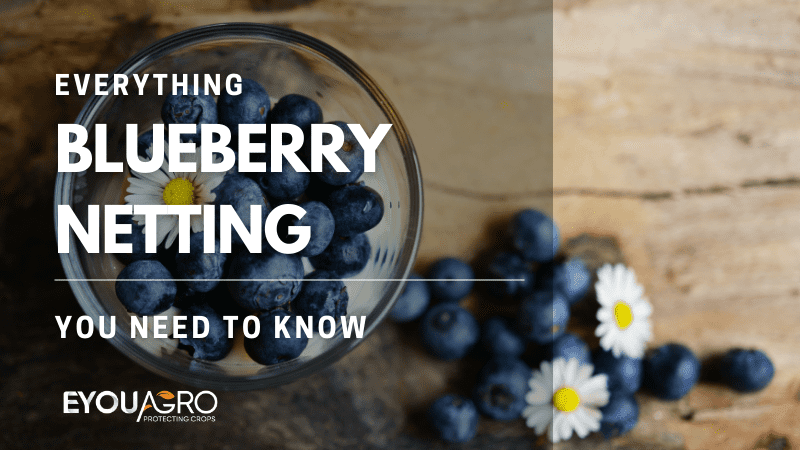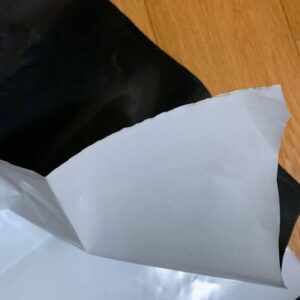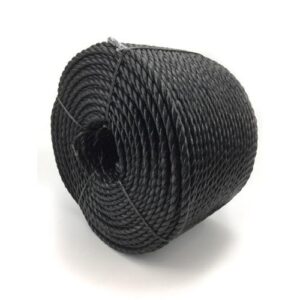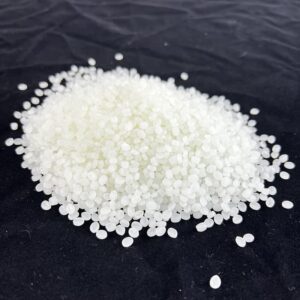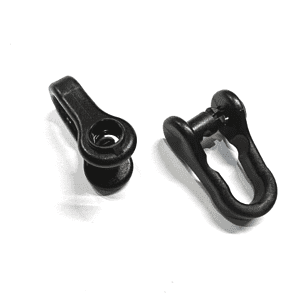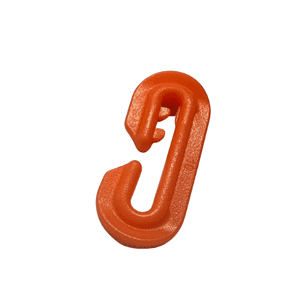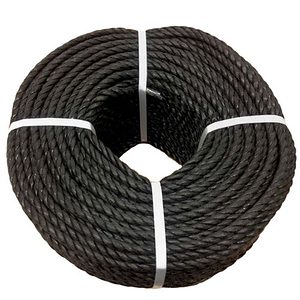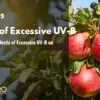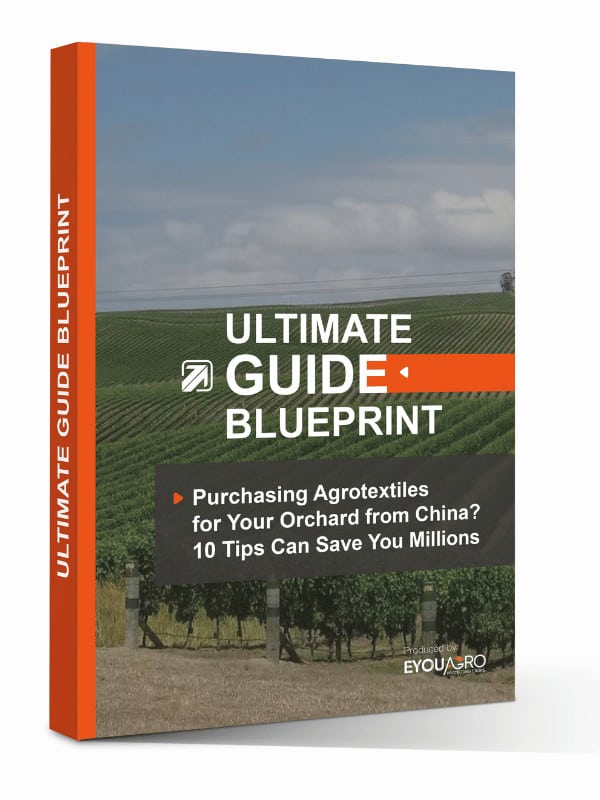Are you wondering about knowing everything blueberry netting for to maximize the profitability of your farm? Maybe you’re unsure if you should use the netting for blueberry bushes on your farm.
Blueberry protection netting is a great way to protect valuable crops from birds and squirrels in difficult areas. But there are things you should know about it before you can get the most.
In this guide, I’ll provide tips on everything you need to know about nettings, leading manufacturers, and installation to boost your profitability.
Section 1: How do you Grow Blueberry bushes?
1. What are Blueberries?
Blueberries, a member of the rose family, are native to North America. They have been cultivated and eaten by Native Americans for centuries. In the early 1900s, blueberries became a staple food widely available in grocery stores.
Blueberries are rich in antioxidants, which help fight off free radicals that cause aging and disease. The antioxidants give the berries their distinctive deep color.
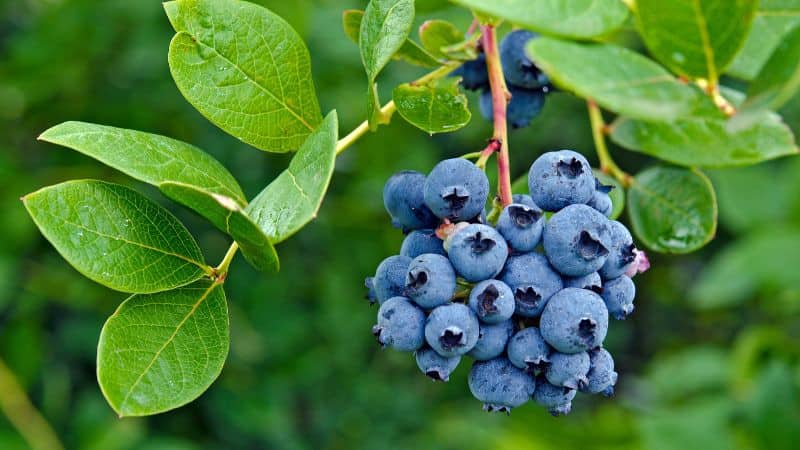
Berries are among the healthiest fruit trees. A half cup of berries contains only 30 calories.
Blueberry bushes produce small dark blue-purple berries on the outside and white on the inside. The fruit is sweet and juicy, with a tart flavor like strawberries or raspberries.
2. Where do they grow in the world?
Blueberries are native to North America. The berries were introduced in Europe during the 17th century.
According to the Food and Agriculture Organization of the United Nations (FAO), the United tates of America is the leading blueberry producer in the world. In 2020 the production reached 294,000 tonnes. Other producers include Canada, Poland, Germany, Mexico, Spain, Sweden, and New Zealand.
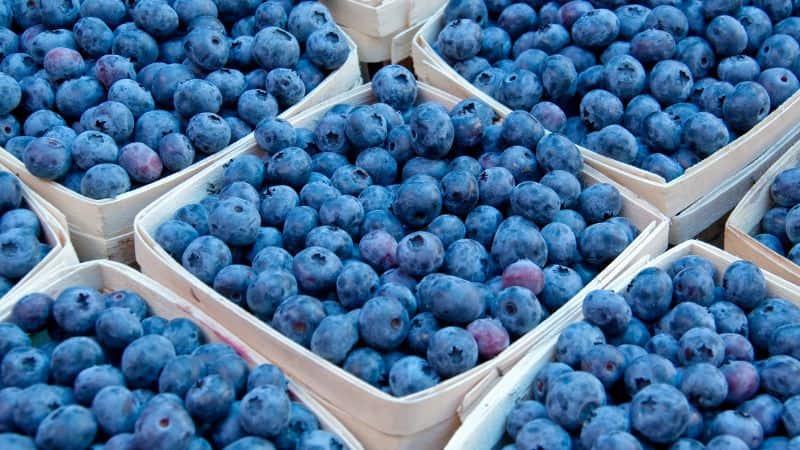
3. Growing Blueberries
Growing and maintaining blueberry bushes is easy, even with basic farming skills. Here are the tips for growing productive blueberry bushes:
● Select from the recommended blueberry varieties in your area. There are more than 50 different types available. High Bush Variety Bluecorp, which can reach heights of 5 to 6 feet, is the most widely used worldwide.
● Ensure you have at least two varieties for cross-pollination. Blueberries require at least two or three other appropriate trees to pollinate them. You should plant a few trees to promote pollination and leave around 50 feet between each tree.
● Get healthy blueberries from a certified nursery. Buy seedlings in good health from a reputable nursery. Ensure you purchase a 2-year-old blueberry plant for your commercial planting.
● Space your bushes 5 – 6 feet apart – Blueberry plants should be spaced 5 to 6 feet apart in rows 10 to 12 feet apart.
● Water the blueberries. Ensure there is a plentiful source of irrigation water.
● Prune the berries. Remove the tips of vigorous shoots that arise to stop excessive upward growth and promote branching. Remove all shoots growing outside a 12-inch crown to protect the plant’s root.
● Harvest after three years. The blueberry bushes you plant should begin to bear after a year or two if they are two years old. Remember that it takes roughly six years to reach total production. Between June and August, blueberries are generally ready for picking.
● Package your harvested berries. You can deliver your berries to a packaging facility.
However, ensure you pay keen attention to the following:
● Birds proofing
Birds pose a serious threat to your berries. Each year birds wipe out more than 30% of the berries. So protect your blueberries from birds by using blueberry netting.
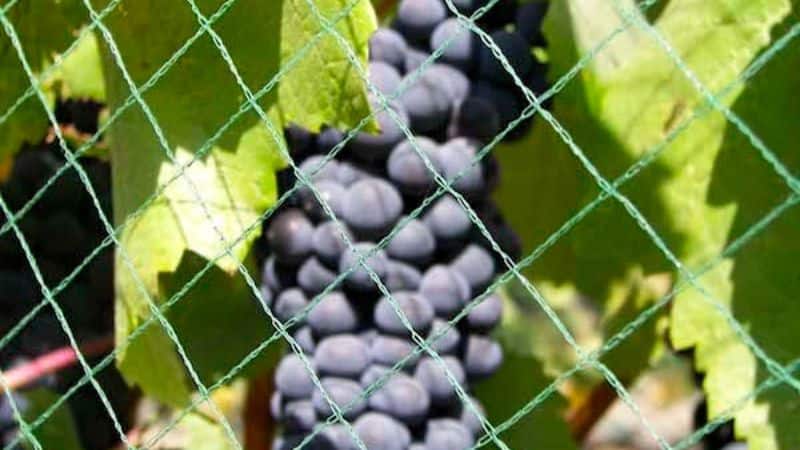
● Waterproof
You should help your berries absorb wind, sun, and water. However, ensure they enjoy protection from harsh elements, such as intense frost, winds, and hail.
Section 2: Keeping Birds and Squirrels Away from Blueberries
Watch out for birds on your farm. Your berries are tasty and nutritious to many birds. And you will find the birds everywhere in your commercial orchards, farms, and backyard garden.
1. Which Birds Eat Your Berries?
Not all birds will eat your berries. Watch out for the big birds like pigeons and small ones like finches
Other birds you may find enjoying your berries include
● Robins
● Warblers
● Starlings
● Thrushes
● Oriole
2. What are the Birds’ threats to your blueberry plant?
Birds pose the following threats to your blueberry farms:
● Knock off your berries when they are hopping and foraging
● Eat your berries partly or in whole
● Peck holes in your berries
● Breaking Branches
● Nesting in your field
● Dropping on your fruits
3. Why should you prevent the birds from damaging your blueberry plants?
Here are some reasons:
● Birds cause blueberry loss and damage through molds, yeast, bacteria, and insects.
● Bird damage brings a reduced harvest.
● The poor quality of the berries delays and interrupts the manufacturing process, affecting the quality of products such as juice.
● Low-quality products such as juice reduce your profit margin.
4. Ways of Keeping Birds from Your Berries
As a blueberry farmer, you know the problem of invasive birds. There are many solutions. Below are some of the solutions for blueberry bird problems.
Scarecrows—One solution for farmers is to use predatory figures such as hawks and falcons. The birds usually avoid an area if they feel unsafe.
But over time, birds will realize they are not in danger. They will start to ignore your scare tactics.
Cages – You can surround your blueberry with cages to protect against birds.
However, for large farms, it is best to avoid cages. The cost will be more than if you choose to net.
Visual and audio tactics – You can use noise machines or visuals. For example
● Reflective materials
● Ribbons
● Scare balloons
But the one proven is netting for blueberry bushes. There’s no question that netting is the most effective way to prevent bird damage to your berries.
1. What is blueberry bird netting?
It is a way to make your farm more productive by keeping birds and other pests away from your farm. The netting from woven plastic mesh is strong enough to hold up against wind and rain.
Netting involves some costs but improves yield quality to offset the costs. The system uses a lightweight fabric material. The fabric is used as a cover for an entire commercial blueberry farm. The blueberry bird netting system works for both cold and warm climates.
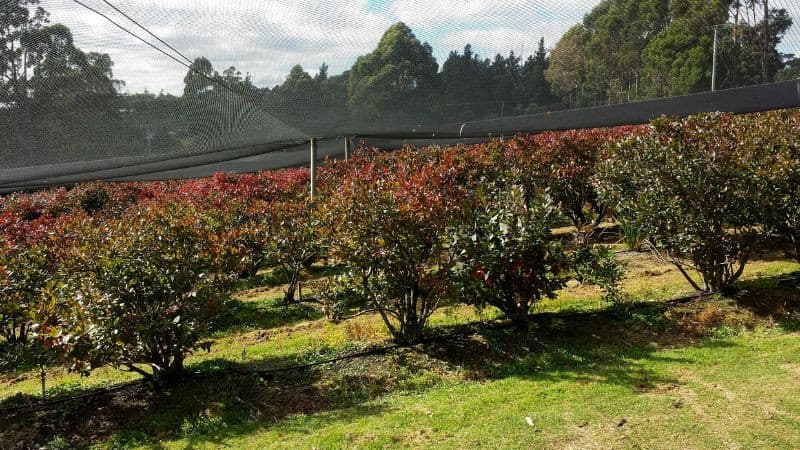
2. Benefits of protecting blueberries with nets
Keep birds away from your large farms for the following reasons;
● Bird netting is safe for the birds because it keeps them out of dangerous areas.
● Netting is used in both large and small spaces.
● It works well in every environment, from large farms to home gardens.
● Netting is an excellent barrier to almost any bird known to cause trouble. For example, pigeons, sparrows, and starlings.
● Nettings are durable and require little maintenance once installed.
● Bird netting is inexpensive and available at various price points.
● It’s risk-free, non-hazardous, and gentle on the environment.
● Bird netting is unnoticeable if properly installed.
● Netting provides a shading effect on your berries
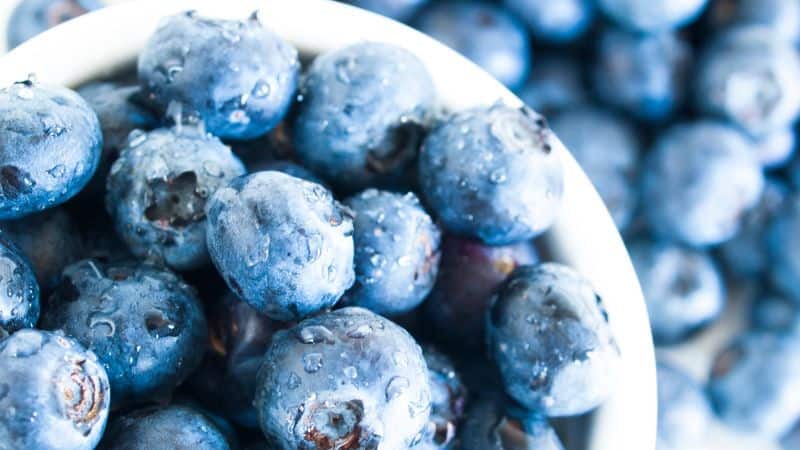
Section 3: Blueberry Nets
1. Features and advantages
Netting has many features that make it easier for growers and farmers to work on their blueberry projects. Here are some key features:
● 100% virgin High-Density Polyethylene (HDPE) resin -To give you durability and withstand harsh weather.
● Blue Netting is lightweight. To ensure your netting is low-cost but heavy-duty.
● The Netting is UV treated with high-quality UV stabilizers. Your net can last more than five years.
● The blue netting comes in all sizes as per your need. The pack sizes vary from 100 to 500 square meters.
● Depending on your requirements, your order for blueberry bird netting is customizable. Customized products ensure you get value for your money.
● The netting is Eco Friendly and safe for birds and wildlife
● Color choice – You choose your favorite colors white, black or green.
2. Type
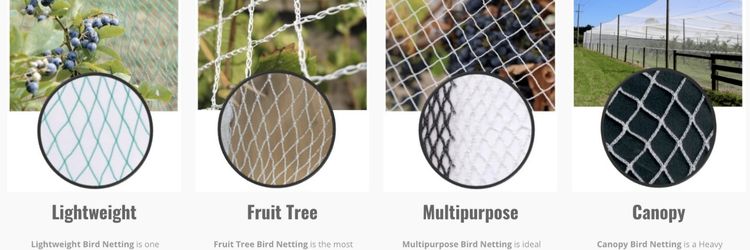
You choose among the following types of blueberry Nets
Lightweight
Fruit tree
Multipurpose
Canopy bird netting
Netting types by Eyouagro- www.eyouagro.com.
3. Specification
The table below shows the specifications
| blueberry Netting | Mesh size (mm) | Weight (g/m2) | Width M. | Warranty | Features and Uses | |
| 1 | Lightweight | 20 X 20 | 20 | 4-8- 12-16-24 | 3 | Light weight one-time use |
| 2 | Fruit tree | 15 X 15 | 35 | 4-8- 10-12-18 | 5 | Mid eight seasonal Drape used |
| 3 | Multipurpose | 10 X 10 | 45 | 4-8- 10-12-18 | 5 | Heavy-duty multipurpose |
| 4 | Canopy | 15 X 15 | 60 | 4-8- 10-12-18 | 8 | Insect protection |
Section 4: Manufacturers and Suppliers
Blueberry nets manufacturers are found worldwide. Getting them involves finding reliable manufacturers, contacting them, and working with them.
1. Netting Manufacturers
Finding blueberry nets manufacturers is easy. They are primarily produced in China, Japan, India, and Brazil. These nations have a wealth of talented employees who produce premium blueberry bush netting at competitive prices.
Here are the top 6 netting manufacturers in the world
1. Eyouagro
Eyouagro is one of China’s biggest exporters of high-quality bird netting. The business produces and exports bird netting products. Its headquarters are in Shanghai, and it is the most skilled supplier of bird netting in China.
Eyouagro’s blueberry bush netting:
● Made of Quality polypropylene fibers
● UV treated to protect blueberries against sun damage
● Will not absorb water, making it ideal for wet climates.
2. Nixalite of America Inc
This company is a top supplier of bird netting products to the American market. The bird net manufacturer creates high-quality bird netting products for
● Commercial
● Residential
● Industry applications
The company focuses on environmentally friendly, non-toxic, biodegradable, and secure products for both people and animals.
3. Bird Net Company India
The company is a well-known and trustworthy manufacturer of bird netting. Its expert staff is knowledgeable about the latest approaches in netting manufacturing.
4. Mastermark Pte Ltd Singapore
The company produces bird netting covering a wide range of applications in agriculture. The products are exported to many countries in Europe, Africa, Asia, and America.
5. Eco-Environmental Services Ltd UK
This is one of the top providers of bird netting in the UK and Ireland. You can order custom-made bird netting that is competitively priced to suit your needs.
6. Intelligro in New Zealand
A New Zealand company expert in bird netting supplies, such as bird netting and bird control products. Since 2004, the business has supplied clients worldwide with high-quality bird netting products.
2. Ways to Find Reliable Blue Netting Manufacturer
Once you know the manufacturer, the next step is to find one that’s reliable for your business.
There are numerous approaches you can take to locate the ideal manufacturer.
- Check their catalogs: Seeing the bird netting products they sell is simple if they have an online catalog. This will inform you of their products and price range.
- Ask for recommendations from Other Businesses: Ask your coworkers, acquaintances, and relatives whether they know of reputable netting manufacturers.
- Look for websites or blogs specializing in bird net manufacturing or focusing on your industry.
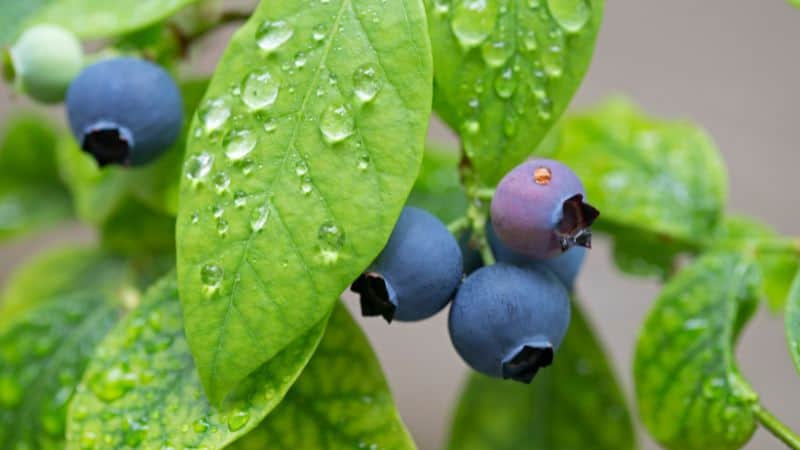
4. How to contact manufacturers
Once you’ve found a business that manufactures blueberry bush covers, the easiest way to contact them is to call or email them. Before making a call or email, ensure you have the essential information ready.
● Your contact and the name of your company.
● A summary of the project you’re working on.
● An estimated project schedule
● The scope of your project and other information.
Find out how much your project will cost. You can also contact them using social media. If you take this course of action, use the listed details.
5. How to purchase blueberry nets
Netting is key in your commercial blueberry berry growing. Here are some tips on how to purchase your netting.
Know your netting requirements. Consider your farm size and netting
Decide the amount of money you want to Spend. The fabric quality, size, and brand can guide you
Search for a reputable supplier. Check on their website pages, blogs, and social media accounts
Check if the manufacturer provides a Sample
Assess their Quality Standards
Conduct Background research on the supplier
Check if they Provide after-sale Service
Is warranty Offered
Place your order and pay
Call for confirmation
Check when it Arrives
Make the last checkup on receipt of goods
Section 5: How to Choose Blueberry Nets
There are many netting systems in the market. How do you choose suitable net systems for your farm? Here are what you need to consider.
1. How much netting do you need
The first thing is to determine your need. Just know
- What are you trying to protect your blueberries from?
- Protecting blueberries from birds or other animals e.g., squirrels
- What size of your farm do you need to cover?
You must ensure that the netting you select is large enough to cover your farm. You can use a calculator to estimate your requirements.
2. Determine the scale you are growing your berries
The net is an essential tool if you are a large commercial grower. It will protect your berries from all threats and increase productivity and profitability.
3. Check for UV resistance
Check whether your netting is UV-resistant. This ensures your net will not break down with exposure to harsh weather.
4. What type of net?
It comes in different types depending on your uses. Here are the main types with their advantages
● Lightweight
o 20gm for the single-use
o Easy to carry and store.
o Cost effective
o Used in blueberry plants and home gardens
● Medium weight
o 35gm for seasonal drape use
o Strong to protect blueberries from birds and other animals.
o Used both in the home garden and on large-scale farms
● Heavy duty
o 60gm for prolonged use and commercial farms.
o Suitable for large-scale growers with permanent canopies that can last several seasons
o Ideal for other soft fruits such as raspberries or gooseberries.
5. Time frame – Short-term or long-term
Netting is designed for long-term or short-term use. For a long-term solution, choose a durable material that can withstand weather elements.
On the other hand, if your need is short-term – Pick the one that is easy to install, remove and store when not in use. The netting is made of lighter materials.
No matter your time frame, there is netting right for you.
6. Cost of your net
The price of your blueberry netting will depend on
● Material
● Size
● Features
The price further depends on the type of netting you choose. For instance, the table below shows the pricing of ordinary blueberry bush bird netting.
Section 6: How to Install the Netting
You can install netting in many situations:
1. Situations to set blueberry bird netting
Install your netting under the following situations:
● When your existing blueberry mesh netting is torn, worn out, or damaged.
● When you want to provide some shade over your blueberries.
● When you want to protect young blueberry fruit trees from hungry birds and other pests
2. Timing
The perfect time for netting your blueberries is right after bunches form, around mid-spring. Berries begin to turn red in August. You can see your ripe berries revealing significant colors in the early summer. Berries establish their color a few weeks before they become fully ripe.
It would be best to get your farm netted before the birds find them before they become soft or lose their excellent color.
3. Installation Methods
There are two ways to install bird netting: a full canopy or a tunnel netting. The two methods differ in cost but are safe for your berries.
● Full canopy netting—The net is held by a rigid structure of timber or metal poles and tensioned cables over the entire orchard. It is a permanent structure. Some of its advantages include:
○ Provide total protection against birds
○ No annual cost because it is permanent
○ Does not obstruct harvesters
○ Modifies microclimate
● Tunnel netting – wires connect several frames. The wires are placed at intervals along the row to support the netting. The netting is placed on the frame when the fruit nears ripening and is taken away after harvest.
○ Netting is pegged to the ground
○ Harvesting is slower
○ No effect on microclimate
4. Installing the blueberry bush netting
The steps in the installation are as follows:
Step 1: You will need to measure the area that needs to be covered by your netting. If unsure of the measurements, it is best to measure twice.
https://eyouagro.com/blog/cover-blueberry-with-netting/
Step 2: Set up the posts around the perimeter of the areas where the nets will be installed. The post should be placed about 2 feet apart.
Step 3: Dig a hole in the ground large enough to work in. The hole should be at least 3 feet deep and 2 feet wide. This is where you will place your equipment.
Step 4: Place one row of netting on top of another row, making sure that both layers are tightly rolled up with no gaps between them.
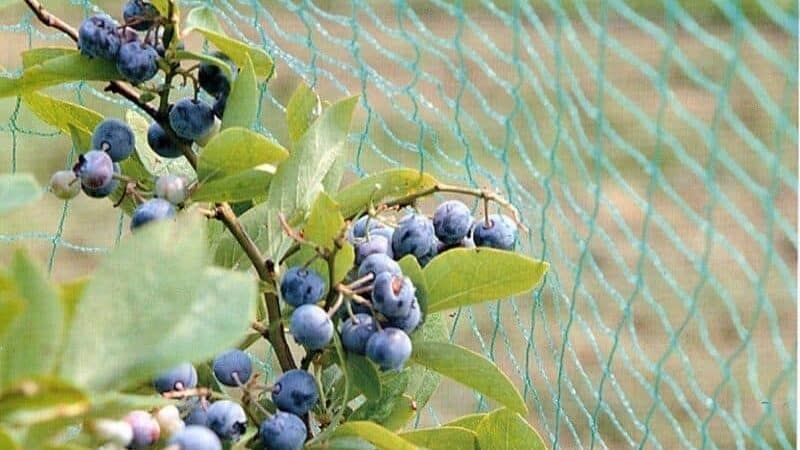
Step 5: Now start rolling down this second layer until you reach as far as you can into your hole.
Step 6: Keep going until you have covered all sides except a small gap at the bottom, where you will attach stakes to secure it.
Step 7: Attach the blueberry tree netting to the posts using the wire or netting clips. Be sure to leave enough space to pull it taut when installed.
Step 8: Pull the blueberry netting tight and secure it to the ground with stakes or rocks
Step 9: Trim any excess netting around the installation area.
Section 7: Blueberry Netting Installation Accessories
1. Garden
The blueberry bush is an excellent choice for home gardeners since it can be used as a decorative landscaping shrub or a tasty food crop. In addition to being consumed fresh, the fruit can also be used to make jams and jellies, baked goods, wine, and other things.
If you are a home gardener, prioritize flavor, fruit size, and color when picking. If baking, processing, or storing, you might prefer smaller, firmer, and more flavorful fruit. Some gardeners also choose landscape cultivars based on the size and color of the bush.
netting frames/cages
Blueberry cages are the most common type of cage used in blueberry production. They are made from wire mesh and have a wire mesh roof with ventilation holes to allow air to circulate under the roof.
A blueberry cage is designed to house multiple varieties of blueberries in a small area. Depending on the variety of blueberries being grown, each cage is between six and twelve feet high.
There are many different styles of blueberry plant netting cages available, including
● Single-tier,
● Double-tier
● Single-tier with top walkway
● Double-tier with a top walkway
● Single-tier with an open front and back
● Double-tier with an open front and back.
The cage installation process is much simpler, forgoing stakes with each net.
Blueberry Netting Hoops
The blueberry hoop is made from UV-protected polyethylene, which is rot-resistant and treated with insecticide. They are available in various sizes and colors so you can choose the right one for your needs.
The hoops can be used alone or as part of a wider system. They are flat-packed, so anyone can easily transport and erect.
PVC tube
The best approach for controlling birds is a thin overhead plastic net with a small mesh size. Use PVC pipe to erect a structure over bushes. Make sure it is tall enough to cover the bushes, allowing for more growth and a height that simplifies plucking fruit. Cover the frame with netting and secure it. Ensure you firmly anchor the net to the ground to stop birds from finding a way in.
2. Large-scale blueberry farms
With growing demand comes increased interest in growing blueberries. Large-scale blueberry production has been a viable industry throughout the world.
Commercial blueberry potential can be measured by how well you select a site, choose cultivars, and plan for cultural practices. You just maintain Production costs. Marketing strategies and labor costs are the two most essential ingredients necessary for success
To install blueberry, you need to netting correctly, you need a few aids depending on your situation. The required accessories include the following:
Pole Caps
The caps are affixed to steel or concrete poles. The ropes or wires used to install the net are fixed and supported by the pole caps. They speed up installation and safeguard the poles from harm.
The three main varieties of pole caps are:
● Wooden
● Concrete
● Simple wooden cover
Net Fasteners
The fasteners fix ropes and nets. They include all kinds of plastic clips. They are simple and faster in attaching netting. Some examples include
● Net connecting pins used for fixing the net in the middle
● Flat plate for fixing the lateral net
● Shade cloth hooks for plastic fasteners and connectors that are suitable for your nets
Remember, you will often go inside the netting to harvest or water. To ease your access, use shark bite clamps to fasten the net. They are a quick, simple, and safe way of attaching netting.
They are made up of four pieces, and the hard serrations hold the edge of the mesh. They are used to lock and open the net.
3.3 Net Fixings
The fixing comprises
● Net fixing pegs – To close the edges of the net.
● Polyester monofilament wire – To stretch the net on the rope.
● Ground cover pegs – to secure your netting firmly in place
Section 8: How to maintain your blueberry netting
1. Maintenance
Once you have installed blueberry netting, you can do a few things to maximize your investment.
● Remove: Don’t forget to remove the blueberry netting after harvesting. Removing your netting will allow other animals to access the berries and help keep the netting in good condition
● Clean: When you’re through with your blueberry netting, you must clean the netting and air-dry thoroughly before storing it. Cleaning prevents mildew from forming on your blueberries
● Store: While you may not want to keep your blueberry netting for an extended time, you should never leave it out in the sun or extreme heat. Exposure to the sun can damage the netting and cause mildew or mold to form on the berries.
● Check for holes: Check the netting regularly for holes or tears. If you find holes, repair them immediately.
● Anchoring your netting: If you live in an area with heavy winds, you may want to consider anchoring the blueberry netting to the ground with stakes and rocks. Anchoring the net protects it from being blown away.
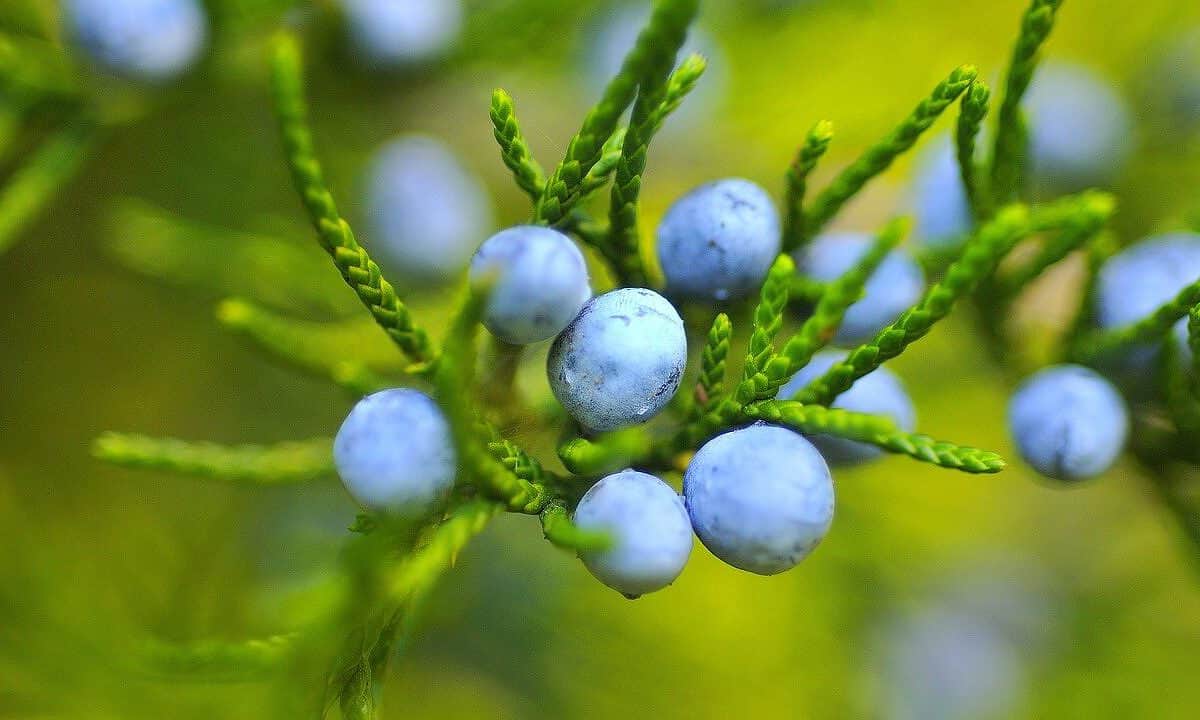
2. Tips for your blueberry netting
Keep in mind the following tips.
Don’ts
● Believe netting is the same. Nets differ in size, weight, and materials. Depending o what you want to achieve, you will determine netting for you.
● Install your netting on a windy or rainy day. The nets will entangle if not handled with care. Wait until the weather calms.
● Expect a permanent solution. The netting will wear and have holes. Always prepare for regular maintenance.
Dos
● Research. Research for the best type of netting. Shop for a reputable manufacturer of quality products.
● Stay organized. Plan well for installation to make the process manageable
● Leave access. Remember to make doors for your harvest. You’ll need to harvest or tend your berries
Conclusion
Blueberries are lovely to grow; netting will help you enjoy your harvest much more. If you’re looking for an effective way to protect your blueberry shrubs from birds, turkeys, deer, squirrels, and rabbits, look no further!
Eyouagro is a leading blueberry netting company that can help improve your system. If you need high-quality netting, feel free to contact us. We will advise you on which netting is suitable for growing your blueberries.
If you have more questions about the netting, get in touch for more information.

